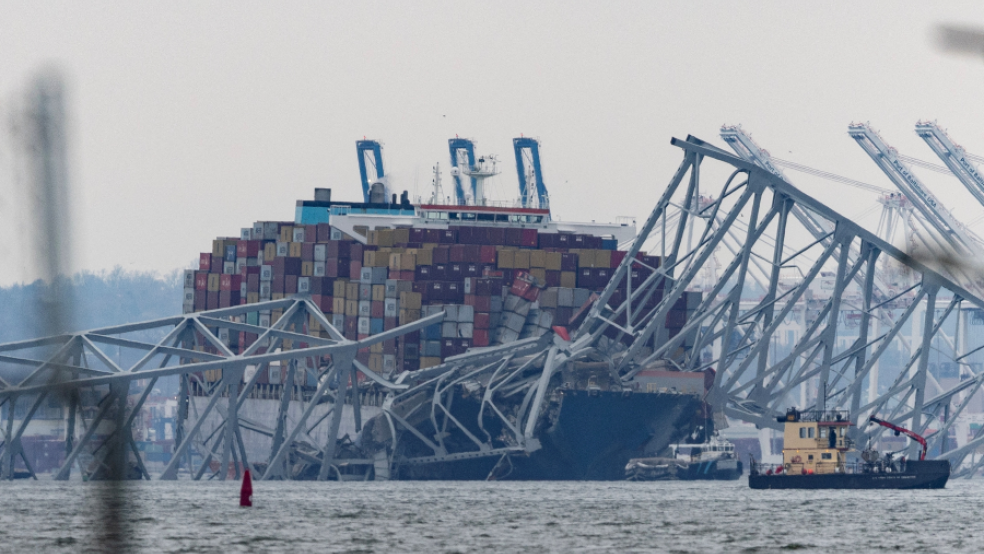Although there’s no firm estimate yet on the cost of rebuilding the collapsed Francis Scott Key Bridge in Baltimore, some details are beginning to trickle in, along with hints of the political battles that could lie ahead as lawmakers determine how to pay for the disaster.
Federal officials said Tuesday that the rebuilding effort could cost upwards of $2 billion, Roll Call reports, although it’s not clear how much of that sum would go toward a new bridge and how much would go toward cleanup. A spokesperson for the Insurance Information Institute told CNN that a new bridge alone could cost more than $1.2 billion.
Maryland Sen. Chris Van Hollen said Thursday that 90% of the construction costs will be covered by the Federal Highway Administration’s emergency fund, a level of coverage reflecting preestablished rules for interstate highways damaged in disasters. (You can read more about those rules in this report from the Congressional Research Service). As Transportation Secretary Pete Buttigieg noted on Wednesday, the emergency fund currently has about $950 million in it. Though some of that money may already be attached to other projects, the fund typically receives an additional $100 million or more from Congress each year.
Van Hollen said he would work with fellow Democratic Sen. Ben Cardin to ensure that the federal government picks up the other 10% of the cost. That will likely require additional legislation from Congress, and Van Hollen said he planned to call House Speaker Mike Johnson to discuss the matter. “My message will be: We’re all Americans. We should all be in this together to help a city in need,” he said. “This is an emergency situation and we’ve always addressed emergencies through supplementals.”
In the meantime, Maryland officials on Thursday requested $60 million from the federal government to cover immediate costs associated with recovery and salvage at the disaster site. The Federal Highway Administration covers 100% of the costs of emergency repairs to highways and bridges within the first 270 days of a disaster.
Funding questions on the right: The idea of using federal funds to cover the full cost of rebuilding is meeting resistance among some conservatives. Rep. Dan Meuser, a Republican from Pennsylvania, expressed irritation that President Joe Biden was so quick to pledge the full support of the federal government in the recovery effort. “It was kind of outrageous immediately for Biden to express in this tragedy the idea that he’s going to use federal funds to pay for the entirety [of the rebuilding],” Meuser told Fox News’s Maria Bartiromo on Thursday. “First reaction, frankly the only reaction, tends to be to spend.”
Meuser said the U.S. should consider pursuing payments from Singapore, where the container ship MV Dali is registered, and from the ship’s insurer. “We just can’t take the easy route all the time and just try to spend the taxpayers’ money,” Meuser said. (Treasury Secretary Janet Yellen said Wednesday that she expected insurance payments to cover some part of the costs.)
Meuser also noted that Maryland received billions in transportation and infrastructure funding from the federal government via the 2021 infrastructure bill, and claimed that the state already has the money it needs for the bridge.
Republican Rep. Chip Roy of Texas, a member of the far-right House Freedom Caucus, said that he is open to federal money being used in response to the disaster, but was concerned about where the funding will come from. “If we gotta go set aside X billion dollars to deal with that port issue, then we should pay for it,” he told CNN. “Go find somebody who's paid for it. And so, well, I want to have those conversations.”
The bottom line: Funding issues aren’t expected to delay relief efforts in the immediate aftermath of the Baltimore disaster, but the long-term project of rebuilding the bridge could spark political battles over who ultimately foots the bill.




